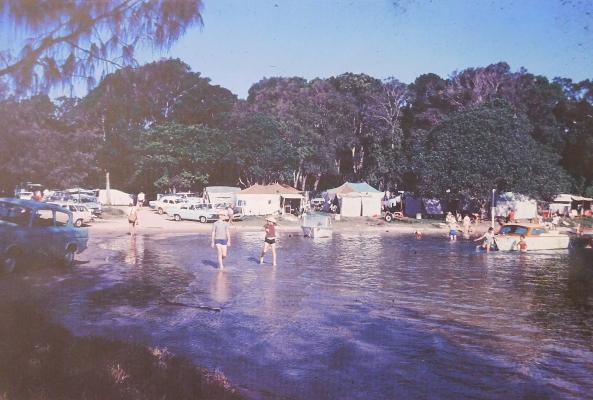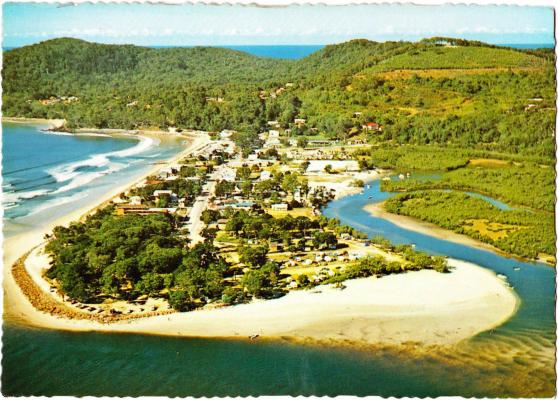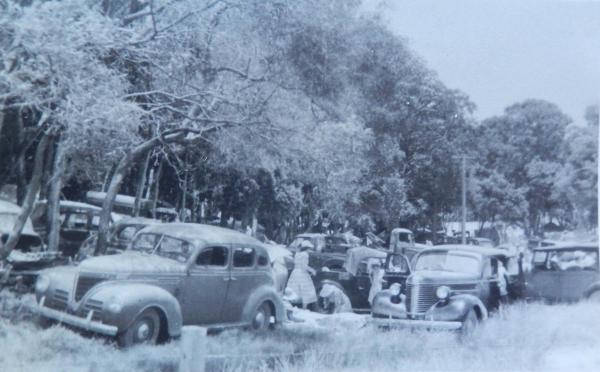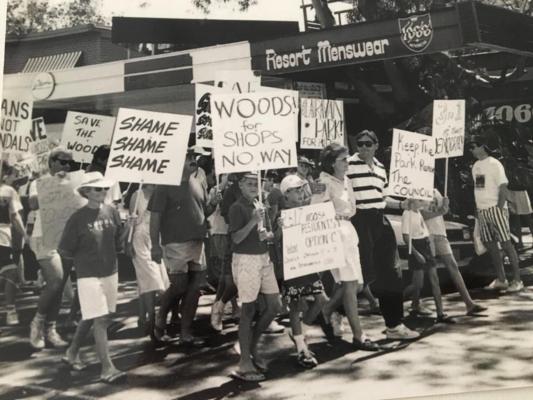This month marks the 30th anniversary of the closure of the Noosa Woods campground and caravan park, an event that seems like a no-brainer today but divided the community back then.
Few of us who enjoy the tracks, trails and picnic areas of the Woods and Spit for exercise, relaxation and family fun can imagine this natural wonderland at the end of Hastings Street any other way, but after a decade in which it nearly became a Club Med and a monstrous car park, the decision of the recently-elected Playford council to move the campers on and restore the Woods as a nature reserve for all was seen by many as an attack on the rights of the common man.
Along with other assaults on Aussie beach culture, like new restaurants with fancy names and prices to match, it was seen as part of a conspiracy to get rid of the average joes and hand Noosa Heads over to the rich and famous. Noel Playford rejected that idea at the time and he continues to reject it today.
He told Noosa Today: “The environment had to be looked after because it was our competitive advantage, and as a community we had to learn that the environment and the economy were inextricably intertwined. To their credit, the business community came around to what we were doing and admitted they’d been wrong, and that they were doing better now because of what we’d put in place.”
But part of what was put in place infuriated some residents so much they marched down Hastings Street to loudly protest what they saw as an elitist takeover. Noel Playford saw it as exactly the opposite of that, and the battle went on for a couple of years. The battleground was the Noosa Woods campground.
The late author and artist Emma Freeman, who arrived in Noosa in 1950, saw the Noosa Woods as an almost magical place, “a lush rainforest of many species of native trees and thick, twining vines”. But in 1962 Noosa Council cleared much of it away to make way for campsites. In her lovely Noosa memoir, Hastings Street – Stories from Noosa’s Past, Emma wrote: “Many magnificent trees and undergrowth were loaded onto trucks and taken to the refuse dump … During the sixties almost every space in the Woods camping area was filled with hippie shelters side by side … locals were intrigued by the strangely sweet smoky odour emanating from the area. Girls in gipsy dresses sand Bob Dylan and Beatles songs as the men played guitars and lounged on cushions … Love became their password. But primitive living and matted, long hair on some of the hippies and their children resulted in an epidemic of head and body lice.”
People had camped without amenities in parts of the Woods for decades before this, but thus began the mythology of the camping area. Historian and author Stuart Scott, who grew up in Noosa around the time, has established a Facebook page called “Noosa Woods Nostalgia”, where people gather to recall with pleasure those lazy, crazy halcyon days.
He says: “I lived at the Woods end of Hastings Street with my parents from 1956 to ‘68, and look back at the old camping ground through very thick rose-coloured glasses. Perhaps it had become a shanty town by the 1980s – I wasn’t paying much attention by then – but it was magic in my era. In the ’60s there were very few ‘permanents’: some old boaties with waterfront spots, a handful of surfers. The Woods seemed so much bigger than I now realise it was – all those trees and all that space for kids to run around, with the perfect lagoon at the far end. It was largely empty for much of the year but every holiday it would fill with families putting up their tents (seemed that only rich Victorians had caravans) on the same spot. Year after year the Ipswich Railway Workshops families staked their claim to a large patch of the southern side, and I doubt anyone was ever foolish enough to intrude.
“It was a village, a playground, and also a goldmine. When all those campers went home they would leave behind empty soft drink bottles, neatly stacked at the base of trees, for the local kids — there were only a handful of us — to take to Noosa Store and claim the deposit. Metho, kero and turps bottles earned even more. We learned the value of recycling, and I made enough to buy row boats and surfboards.”
Scott started his Facebook page in the hope that others would want to share their memories and photos of the Woods. While the feedback has been but a “trickle”, people are still passionate about the place.
Grant Cowell posted: “Lived in the Woods for 5 years, Dad, Mum, me with brother, sister plus a dog and cat. 1969 to ‘74 in a 16ft Chesney and Annexe. We still agree it was the best time of our lives. If we weren’t swimming and surfing before and after school we would be fishing or rowing old timber boats through the mangrove canals and up to Stingray Corner.”
Judith Horn remembered “camping in the woods each year with my family from the mid-1940s. Each morning mum would ask what we wanted for breakfast and we would always answer fish. We were then sent with our hand line to catch our own breakfast which would only take a few minutes. Wonderful memories.”
Noel Playford believed that having the Woods as a recreational amenity for all was key to the axis of environment and economics in Noosa Heads, and that meant the campground had to go. He says: “When I was a kid, we’d go the Woods as a family and sure, there were a few people camped there most of the time, but by 1988 there was a barbed wire fence around the whole thing and inside it were all these caravans that Brisbane people left there as weekenders. It was a council-owned recreation and camping reserve but it was a disgrace, and we couldn’t get the people out. One woman had a Hills Hoist next to her caravan, right on the beach, with the best view in Australia. We had to go to court to get her out!”
The Woods was cleaned up and new vegetation planted in time for the Christmas holiday season. Says Playford: “We had a community tree planting after the new road went in, and a lot of people came to be a part of it. A group of young foreign backpackers came along and asked what we were doing. When I told them we were creating a nature reserve for everyone to enjoy, they thought it was such a great idea that they got in and helped us. To me that vindicated completely our decision to remove the campground.”
Another side of the story emerged many years later on Stuart Scott’s Woods Facebook page when former caretaker Stan Seymour posted: “My wife and I ran The Woods from 1980 to ‘85 (roughly). Had a great time, except for a council which was determined to close it and turn it into a car park for the hotels and motels in Hastings Street. Some of the old councillors from back then should be horsewhipped for their attitude to campers and camping parks.”
Ian Christesen replied: “Horsewhip me for allowing a revegetated green space to be created and built on the littoral rainforest that was being destroyed.” And former mayor Bob Abbot backed him in: “Me too for creating a wonderful place for the locals who paid all the rates to enjoy the ever-increasing green space in the Woods and on the Spit. If my memory serves me correctly, the local name for the Woods at the time was Seymour’s Stadium because of all the fights in the caravan park.”
Still passionate about it after all these years.










